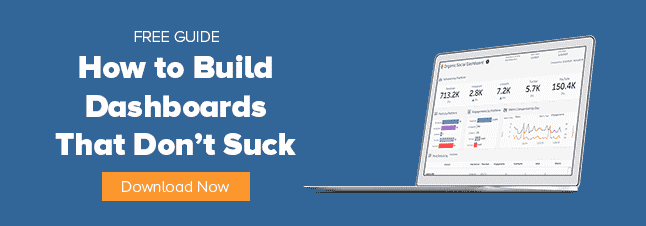
If you’re responsible for measuring Facebook ad performance, you probably have big questions about the future of its tracking pixel.
The pixel has been an important tool for measuring a campaign’s effectiveness. When it’s installed on a website, it can connect conversions and other website activity back to the Facebook ads that helped produce them.
Unfortunately, the pixel is probably going to be a lot less useful in the very near future.
More and more browsers and platforms have stopped (or plan to stop) supporting third-party tracking like the kind that Facebook’s pixel provides. Google Chrome, for example, will phase out third-party cookies in 2023.
Without the Facebook pixel’s data, it will be harder for Facebook to measure and optimize its ads. As a solution, Facebook is encouraging its advertisers to start using its Conversions API with their websites, alongside the tracking pixel.
Why Facebook recommends the Conversions API
The API can collect data on website conversions and sessions even if a user’s browser doesn’t support third-party tracking.
Let’s say someone visits your website and downloads Facebook’s tracking pixel to their browser.
The pixel is just a short piece of code that helps track how users are interacting with the website. Until recently, your visitor’s browser — guided by the pixel — would send information about conversion and session activity directly to Facebook.
This is called client-side tracking, because the action is happening inside your visitor’s browser.
It’s also a good example of third-party tracking, because data is being sent to a third party (Facebook) that your visitor might not be aware of. Third-party tracking is what browsers are trying to prevent.
The Facebook API is an example of server-side tracking.
With server-side, the pixel doesn’t send data directly to Facebook. It sends that information to your website’s server. Then your website’s server sends the data to Facebook. The flow of data is happening between servers, hence the name.
Server-side tracking works because it’s built on first-party tracking, i.e. the pixel tells your website’s server what’s happening as visitors use the website.
Browsers are OK with this because (A) that information is necessary for websites to function and (B) users generally understand that a website is going to see what pages they’re looking at.
What makes the Facebook pixel special — what makes all this work — is that it can be configured to support both third-party and first-party tracking.
If a browser allows third-party tracking? Cool. The pixel (via the browser) will send the data directly to Facebook.
Browser won’t allow third-party tracking? No problem. If you’ve got the API set up, the pixel can still get the information out.

What should you do?
Facebook recommends using both the pixel and the API because if one method fails, the other can step in and record the relevant data. As a best practice, though, they should both track and share data on the same events
After all, the pixel isn’t dead yet. When it works, it still has the ability to provide detailed information about individual users’ activity across multiple websites.
If you use the API and the pixel together, is there a risk of double-counting conversions?
Yes, in theory, but Facebook has created a deduplication process so that if the pixel and the API record the same conversion, it’s only counted once in Facebook’s reporting.
To avoid duplication, you’ll need to make sure that each event has an event name and an event ID. This post provides more detail about the process.
How Facebook is making the Conversions API easier to use
Historically, the Conversion API has been less popular than the pixel because it takes more expertise and time to implement.
To increase adoption, Facebook recently launched the new Conversion API Gateway, a web-based tool that reduces the setup time from weeks to hours. (One potential obstacle: Right now, the gateway only works with Amazon Web Services.)
In addition to being easier to use, the gateway is expected to offer new features like private lift measurement sometime in 2022, as AdExchanger reports.
This post includes a setup guide for the gateway.
When to use the Conversions API Gateway
Facebook recommends using the Conversion API Gateway if ….
- You currently use the Facebook pixel.
- You haven’t already installed the Conversions API and used it to send web events to Facebook.
- You’re spending at least $2,000 per month on ads optimized for web events.
- You don’t have an eCommerce partner who can help you implement the Conversion API more easily. A lot of eCommerce players (including Shopify, WooCommerce and BigCommerce for starters) may be able to set up the Conversions API for you pretty quickly.
Will any of this affect your Facebook data in ChannelMix?
It shouldn’t. ChannelMix is still pulling your data from your Facebook account, and the new tracking protocols shouldn’t affect that.
It helps to remember that ChannelMix is pulling the data from Facebook after all of the media performance metrics, conversions and events have already been attributed to the Facebook Ads. The Conversions API is further upstream from when ChannelMix accesses the data from your accounts.The Facebook Ads connection in ChannelMix uses the Facebook Ads Insight API, which is a dedicated resource for reporting metrics related to your ads.
Lastly, you (or your clients) may notice variations in your Facebook totals, not necessarily because you’re using the API, but because the industry’s larger phaseout of pixels may reduce the counts that you normally see from a campaign.
If you have questions about Facebook or your larger strategy, we’re here to help. If you’re a current client, contact your client experience manager to set up a conversation with our team.
